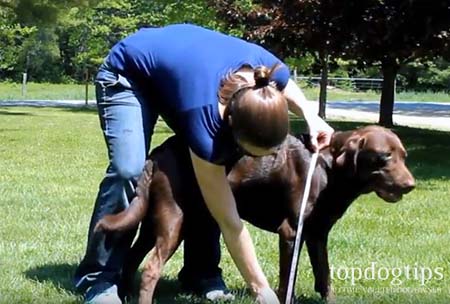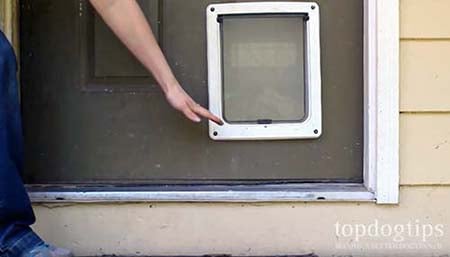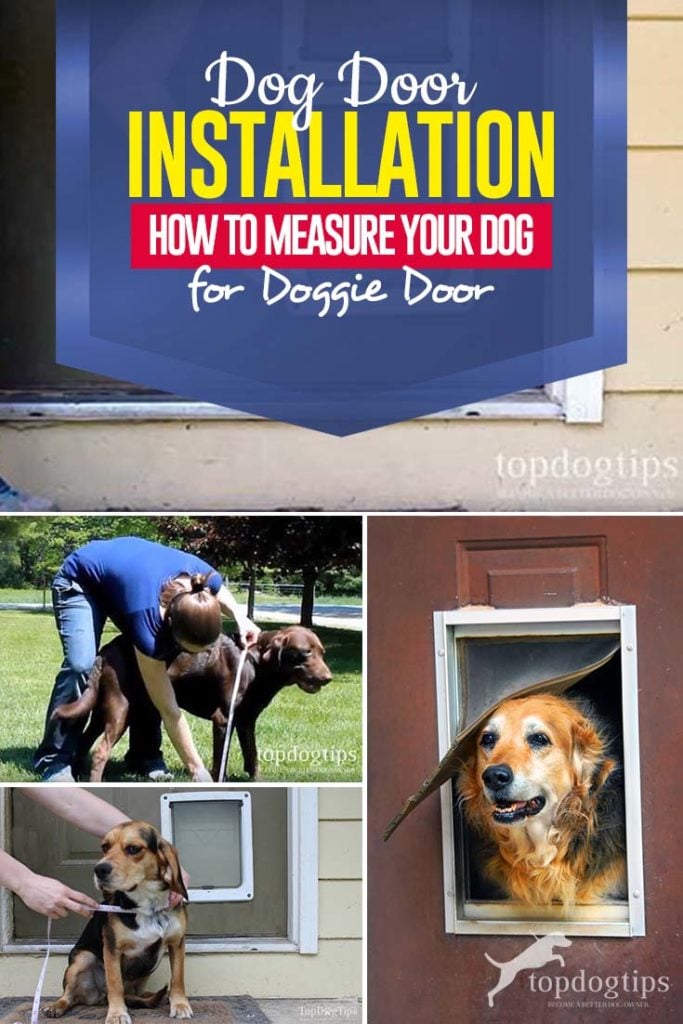Choosing the right dog door isn't as simple as one might think. You can't just “eyeball” the size of your dog and expect to choose the right size dog door, especially if you're going to install it into an existing house door or wall.
Table of Contents
Dog door installation process could get complicated, and learning how to measure dog for dog door is very important. A door that's too big could make it difficult to climb through, and a door that's too small could be impossible to enter.
Before You Begin
The first thing you need to know about buying a dog door is that any company selling pet doors should include measurement guidelines on their website, Amazon product page or dog door packaging. Like most products on the market, every pet door is made differently. Thus, while they may look similar, they have very different measurements.
If you have only one dog, it's pretty simple to learn how to measure a dog for dog door. However, if you have a multi-pet household you'll need to be a little more creative. You need to find a pet door that is low enough for the shortest dog to step over and tall enough for the tallest dog to fit through comfortably.
This might sound tricky, but fortunately most dog door manufacturers have taken this into consideration. You can also help your pets by ensuring that you place the pet door low enough when installing it. By purchasing a taller and higher dog door, and installing it in a lower position, you make it easier for shorter legs to step over while still allowing it to be tall enough for bigger dogs.
With that in mind, let's talk more about dog door installation process, preparations and how to measure dog for dog door to find the right size product for your family members.
How to Measure Dog for Dog Door Installation
1. The Three Measurements You'll Need
When you're in a process of figuring out how to measure dog for dog door, there will be three measurements that you must take. I demonstrate how to obtain all three in the video guide above if you're unsure how to do it.
The measurements you'll need are:
- Your dog's width (not including puffy fur)
- Your dog's height
- The required height of the rise of the dog door*
* This is the step up that your dog will need to take to get through the door.
2. Measure Your Dog's Width
When you're measuring the width of your dog, measure the widest part of their body.
In most dogs, the widest part is the chest. If your dog has a puffy coat, do not include this in your measurement. The hair will fold in as your pet goes through the door.
Then, add 1 inch to the width measurement for safety reasons.

3. Measure Your Dog's Height
The next step when learning how to measure dog for dog door installation is to find out the height of your pet and how tall the pet door needs to be.
To do this, measure from the top of your dog's shoulders to the ground.
Keep in mind that if your dog is not full grown, you should wait. While you can find the average height for most breeds, you don't want to take the chance on buying a dog door that is too small and having to replace it down the road.
Then, add 2 inches to the height to ensure your dog doesn't scrap against the doggie door when trying to climb through it.

4. Measure the Rise
Now, for the required height of the rise of the dog door. As I explain in my video guide above, most dogs can raise their paws to their chest to step over an object. If this is the case with your pet, measure the height from the floor to the lowest part of their chest.
The rise cannot be any taller than this measurement. It's even better to keep the rise at least 1 inch shorter than this measurement.
Note: If your dog has mobility issues, you'll need to get a dog door that offers the smallest rise possible. Try not to make the rise more than 2-inches (for large breeds) or 1-inch (for small breeds) if your pet suffers from any kind of mobility issue.
Keep in mind that there may be a step down on the outside of your dog. As I demonstrate in my video, this is the case at our house. We had to install a dog door low enough that our pets would still be able to comfortably make that step down without hurting themselves or getting stuck in the door.
5. Dog Door Features to Consider
Finally, when you're ready to buy a dog door, you'll need to know more than just your pet's measurements. You also need to know what features to look among the available products, and consider several other factors before your pet door shopping session.
You'll need to be sure that:
- Dog door can be locked to prevent your dog from going out when they shouldn't
- Dog door seals securely behind your pet;
- There is some type of insulation to ensure that the frame around the door seals securely when installed.
Learning how to measure dog for dog door installation is crucial in the buying process. I can't stress enough that you should never buy a pet door without measuring your pooch according to the manufacturer's standards for the specific doggy door that you choose.
6. My Favorite Dog Doors
Some dog doors are not only better and easier to install, but they can also be less complicated to measure your dog for and will include more accurate measurements and recommended size chart. I've tested a number of pet doors for my reviews, so here are five of my favorite dog doors if you're still in the shopping phase.
| Preview | Product | Rating | |
|---|---|---|---|

|
Endura Flap Pet Door for Walls in White |... | 770 Reviews | Check Price |

|
SureFlap-Sure Petcare Microchip Pet Door (White) | 4,919 Reviews | Check Price |

|
PetSafe 1-Piece Sliding Glass Pet Door for Dogs &... | 6,959 Reviews | Check Price |

|
PlexiDor Performance Pet Doors for Dogs and Cats -... | 77 Reviews | Check Price |

|
PetSafe NEVER RUST Wall Entry Pet Door -... | 4,252 Reviews | Check Price |
READ NEXT: The Best Dog Doors for Walls and Doors
Disclosure: We may earn affiliate commissions at no cost to you from the links on this page. This did not affect our assessment of products. Read more here and find full disclosure here.














